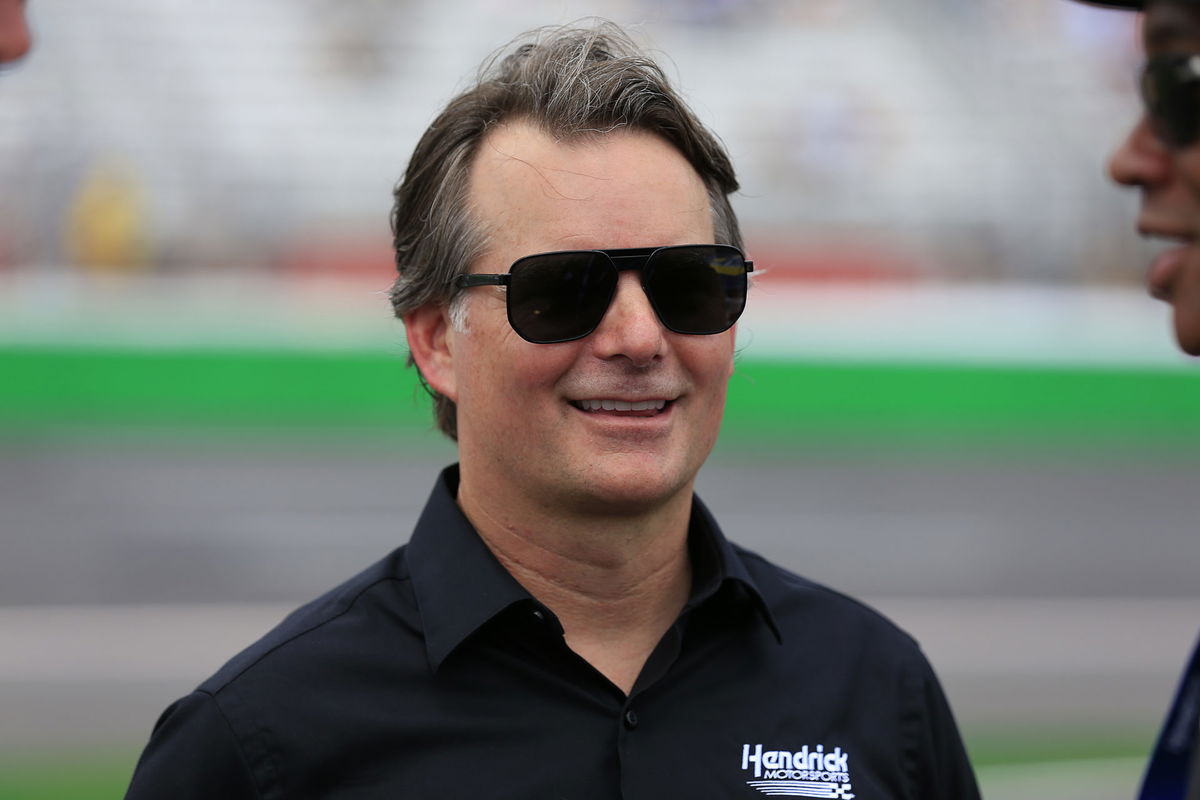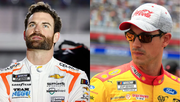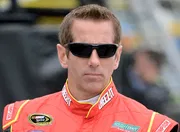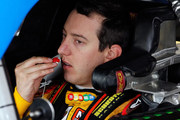
Getty
ATLANTA, GA – JULY 10: Retired NASCAR Champion Jeff Gordon on pit road before the 53rd Annual Quaker State 400 NASCAR race on July 10, 2022 at the Atlanta Motor Speedway in Hampton, Georgia. (Photo by David J. Griffin/Icon Sportswire via Getty Images)

Getty
ATLANTA, GA – JULY 10: Retired NASCAR Champion Jeff Gordon on pit road before the 53rd Annual Quaker State 400 NASCAR race on July 10, 2022 at the Atlanta Motor Speedway in Hampton, Georgia. (Photo by David J. Griffin/Icon Sportswire via Getty Images)
With its entry into NASCAR broadcasting, the $2 trillion broadcaster Amazon Prime Video has notably shifted the focus toward analytics and data transparency. Prime Video’s debut NASCAR race, the 2025 Coca-Cola 600, drew an average of 2.72 million viewers, peaking at 2.92 million, making it the third-most watched non-Fox race this season. Fox’s spring coverage this year averaged 3.1 million viewers, so Prime Video has to make some strides in reaching this number, but they have started on a positive note. Remember, the idea behind this shift is to attract a younger audience.
Watch What’s Trending Now!
Unlike FOX Sports, which relied heavily on formulaic race coverage and commentary, Amazon integrated in-depth live telemetry, such as fuel levels, pit-call rationale, tire compounds used, and real-time pace details. But that is just the beginning of this journey. Amazon aligns NASCAR with the slick, fast-paced feel of professional gaming or fantasy sports broadcasts. This stands in contrast to Fox’s slower-paced, traditionally structured presentation, which often retraces historical highlights and long-form driver interviews. Insiders within the NASCAR industry have appreciated this tailored approach to fans, and even Jeff Gordon is starting to take notice now.
ADVERTISEMENT
Jeff Gordon on why Amazon’s broadcast outweighs traditional coverage
In a recent interview with “Rubbin’ is Racing,” Gordon put it straight when asked about the difference that Prime Video has made in the sport’s broadcasting segments. “Yeah, I mean I look at this weekend at Michigan and you had things that were happening on pit roads, strategy, fuel mileage, and it’s really hard for fans at home to follow along with that,” Gordon answered. “And so the more that you can paint a picture and make it easier for fans to understand what’s a driver doing to save fuel? How many laps does he really have? Is he going to run out or is he not going to run out?”
Amazon Prime decided to use a different broadcasting strategy for its Michigan International Speedway race this season. Using the new “Burn Bar” feature, which is an AI-powered gauge that shows fuel burn and miles-per-gallon in real time, translating previously hidden telemetry into the viewer-facing tool during a crucial 48-lap green flag run. Former crew chief-turned-broadcaster Steve Letarte explained that they predicted William Byron would run out of gas, and he indeed did, while on the other hand, Denny Hamlin narrowly made it, thanks to the tool’s accuracy and dramatizing the finish for fans. The blend of AI analysis, strategic insights on fuel strategy, and pit-road drama transformed the viewership experience for the fans.
“There’s technology out there, there’s data coming off the cars that I just don’t know if we’ve done a good enough job over the years of tapping into all of it and utilizing it. I see Amazon pushing that,” continued Gordon. “They did this in NFL as well. They’re really about analytics and bringing that to the fan. They also know they’re catering to a younger fan base. And so that’s sort of what they demand.” While Amazon Prime has been achieving milestones with its NASCAR debut, it has clearly leveraged its data and analytics expertise across sports, with NFL Prime Vision broadcasts being a prime example. During Thursday Night Football, Prime Vision introduced features like “pressure alert,” which highlight potential pass rushers before the snap, and “prime targets,” indicating which receivers are most likely to be targeted with predictive real-time visuals, making these innovations cater to a younger fan base that demands analytics-driven storytelling.
ADVERTISEMENT
View this post on Instagram
As Jeff Gordon recounts, the past few weeks have seen an amazing combination of all these strategies, increasing the efficiency of NASCAR in return. “So one thing that I love that I saw this past weekend was the race off pit road, we always see the race off pit road, but what do they do? They say, here’s who stayed on track,” said Gordon. “And then from this position down, here’s how many tires they took and here’s how they came off pit road. And I know as a viewer and as a fan, that’s what I want to know.” During the race, viewers could instantly see the impact of this strategy: who took two tires, who took four, and exactly where each driver rejoined, removing any uncertainty about pit decisions.
ADVERTISEMENT
But while this may have been an exciting experience for the younger fans, some core NASCAR fans were not quite satisfied with the change from traditional broadcasting roots to availing of new and modified technologies, which were considered hard to navigate. Some NASCAR veterans, such as Kurt Busch, also emphasized that the true essence of the sport comes just by experiencing it live. “I mean everything evolves, and technology, of course, is what really is helped our sport grow but it also over-saturates things in many ways where people used to had to go to the track,” said Kurt. “That’s where you saw your driver, you went there for the action and now you can catch it on different streaming this or this race, this channel, but still the core vibe at the track is there.”
While a first-hand live experience would be worth all the money, with international fans now getting access to the world of NASCAR through Prime Video, it is a revolutionary time for the sport to step up its game.
Top Stories
FOX Earns Rare Moment of Respect as NFL Honors NASCAR Legend Live on Air

NASCAR Radio Host Rejects Denny Hamlin’s Warning Amidst Call for Ex-Fox Broadcaster’s Apology

Corey LaJoie Pokes Joey Logano With Backhanded Dig After Star NFL Appearance

Another Almost Fatal Disaster Surfaces From Statesville Airport Amidst Ongoing Greg Biffle’s Crash Investigation

The Retirement Question – What Happens if Kyle Busch Fails in 2026?

ADVERTISEMENT
NASCAR taps Jeff Gordon for landmark start at Mexico City
As Jeff Gordon has been conferred the title of the “Official Commander” for the Viva Mexico 250 race this weekend at the Autódromo Hermanos Rodríguez, his official command of “Drivers, start your engines,” will signify more than just the start of the race; it will symbolize NASCAR’s latest leap into international territory. Nestled in the heart of one of the world’s most vibrant cities, the race is already being hailed as the most important one of the 2025 NASCAR Cup Series Calendar races.
For the Hall of Famer, this honor comes full circle. Widely credited with helping modernize the sport and expand its global reach, Gordon built a legacy not only with 93 Cup wins and 4 titles but also as the most successful road course driver in NASCAR history, with 9 victories to his name. His mastery of circuits like Sonoma and Watkins Glen makes him a fitting figure to usher NASACR into its latest road course challenge.
And as the Vice President of HMS, Gordon watches from the top as his team arrives in Mexico with momentum, eyeing its 5th win of the season and hoping to extend its all-time record for road course victories. The 2.52-mile, 15-turn track, best known for hosting Formula 1, will roar with a different kind of horsepower as NASCAR stock cars take center stage in Mexico’s capital.
ADVERTISEMENT
ADVERTISEMENT
ADVERTISEMENT
ADVERTISEMENT

